Pain Management: Surprising Causes of Pain
Foot Pain: Flip Flops

Flip flops are a convenient way to keep your feet cool in the summertime. But not all flip flops are pain-free. When you choose a pair, see how they bend. If you can bend them in half, don’t buy them. They should only bend at the ball of the foot where your foot naturally bends. Also look for pairs with arch support, and be sure your toes don’t bend over them—that can lead to injuries.
Whatever pair you choose, don’t walk in them for too long. Long walks in flip flops can cause plantar fasciitis, a tenderness and/or inflamed pain in your heel.
Thumb and Neck Pain: Smartphones
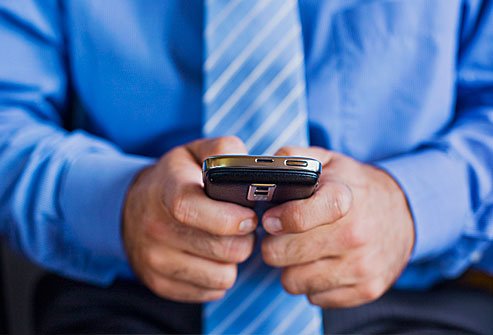
Along with many conveniences, smartphones have brought with them a few health problems. Some people who use their smartphones heavily have found problems in their thumbs and necks. These conditions are called “text thumb” and “text neck.”
Text Thumb
Have you noticed your thumb popping and snapping when you bend it? Does it hurt? You may have text thumb. The kind of repetitive motions you use to click, drag, swipe, and drop can cause this painful condition. In serious cases the thumb may even get locked into a curling position.
If your thumb has lost mobility from smartphone use, your doctor may recommend cortisone injections. When injected into a stiff area, cortisone reduces inflammation, which also reduces pain in most cases. When treated, text thumbs can be restored to full mobility about 80% of the time.
Text Neck
As we get older it’s common to develop shoulder, neck, and lower back pain. But these symptoms are now being seen in younger people who spend too much time hunched over while absorbed in their smartphones. By dropping your head to look down at your phone, your head puts far more pressure on your neck—as much as 60 pounds of force.
To relieve text neck, your best hope may be to focus on good posture. Do you stand and sit up straight? If not, focus on keeping your spine in line. Try holding your phone up to your face rather than bending your neck to see the screen. And if the problem keeps happening, shoulder extensions are a simple stretch that can ease your pain.
Sciatic Nerve Pain: Wallets

For some, sitting on a fat wallet can aggravate hips and buttocks. The pain refers to piriformis syndrome, sometimes called “fat wallet syndrome” or “wallet butt.” About 1 in 5 people have a sciatic nerve—the largest in the body—that cuts through the small piriformis muscle that extends from the tailbone to the hip bone. They are more likely to develop this problem.
This painful problem is treatable. About 80% of wallet pain-sufferers find relief from ice, rest, over-the-counter pain medicines like ibuprofen, and in some cases prescription muscle relaxers. Stretching and strengthening the muscles in that area can also be helpful, and these techniques can be learned through physical therapists or from your doctor. If those treatments fail, shots of botulism, steroids, or lidocaine hydrochloride can also be effective; consult your doctor before getting treatments.
Neck Pain: Your Commute

Your drive to work can be a pain in the neck. Over time, all those hours on the road add up. It can lead to necks overstretched in awkward positions and out-of-place neck joints.
There are a few ways to deal with this painful problem. The first is to adjust the way you sit when driving. Pitch your seat forward so that your head actually rests in the headrest, and your neck is centered above your hips. Use both hands to steer, too, as using only one can twist your neck and shoulders.
Stretching can help, too. You can even do some stretching in the car. Try pushing your head back into the car’s headrest and holding it there for 30 seconds at a time. Or try pulling your head forward as far as you can go while keeping your chin parallel with the ground for about five seconds at a time. Shrugging your shoulders toward your ears can work, too. A few of these stretches a day can help take some of the pain out of your commute.
Sports Injuries: Motion-Controlled Video Games

Are your video games hurting your health? When the Nintendo Wii was first introduced in 2006, patients started appearing in doctors’ offices with a variety of injuries to their necks, wrists, arms, and shoulders. Collectively, these cases came to be called “Wiiitis.” Other injuries have included bruises, black eyes, and cuts on the hand. Not long after this video game system was released, other manufacturers followed suit, leading to more injuries.
Doctors are advised to ask their patients what games they are playing, and for how long. As it turns out, many of video game injuries run parallel to the sports they imitate. In the worst cases, these injuries can even be life-threatening. One woman who fell from her sofa playing Wii Tennis developed a serious accumulation in her lungs, for instance. A man fractured his spine while swinging the controller too intensely. On the whole these systems are considered relatively safe, but clearly it is important to follow the recommended safety procedures. Among them, make sure you have a clear area to play in, and warn those who aren’t playing not to walk into the playing area.
Headaches: Cheese

There’s a headache-triggering chemical lurking in aged cheese. Your body breaks down the amino acid tyrosine into tyramine after you eat sharp cheddar or some well-aged parmesan. That seems to have a tendency to bring on migraines for those who suffer from them, though some studies dispute this. Cheeses thought to bring on headaches include:
- Blue cheese
- Brie
- Cheddar
- Feta
- Gorgonzola
- Mozzarella
- Muenster
- Parmesan
- Swiss
If you think this might be causing your headaches, consider keeping a migraine journal. Make a note when you eat a food that could be causing your migraines, including how much you ate, when you ate it, whether you experienced symptoms, and how bad they were. Over time you should be able to recognize a pattern.
Neck and Back Pain: Binge-Watching TV

When you’re inactive for long stretches, the muscles that protect your spine can become weak. One study found that men who laid in bed all day for eight weeks had noticeable weakened spine muscles. The same thing happens if you park in front of your TV set for hours at a time.
Back and neck pain are aggravating conditions for many people. While sometimes people have a sense of what’s causing this pain, often they are left baffled. Paying attention to the way you sit can help improve many of these cases. If you want to make improvements while you sit, remember these tips:
- Change position frequently. Muscles long at rest are more prone to stiffness, strain, and pain.
- Get up and stretch now and then. If it’s been more than an hour since you got up, get up! Moving around can keep muscle pain away.
- you are seated or reclining, avoid twisting at your spine.
- Consider investing in a lumbar pillow or other cushion. Redistributing your weight can help.
Wrist and Thumb Pain: Your Baby

Even your baby, despite his or her adorable ways, could be causing you pain. Some women develop a shooting pain in their wrists and thumbs known as DeQuervain’s tendonitis, also known as “baby wrist.” It’s a repetitive stress injury caused by lifting your baby with fatigued wrists drooped toward the ground, and some dads experience it, too.
The problem is exacerbated in new mothers. Tendons tend to loosen and relax near the time of childbirth to give women greater flexibility. Plus the fluid they retain during pregnancy can make tendons chafe and swell. That plus picking up a baby over and over can lead to pain. Wrist braces and cortisone injections can help reduce the inflammation and swelling of baby wrist.
Elbow, Back, and Shoulder Pain: Laptop Cases

Laptops make life a lot easier most of the time. But carrying them from place to place can make things more difficult for your back, shoulders, and elbows. Muscle pain caused by laptop cases slung over the shoulder or worn on the back are fairly common. One study of nearly 400 laptop-wielding students found that more than 75% complained of shoulder pain. More than 35% also complained of elbow pain
Solving this problem may require a new case, but not necessarily. If you stuff unnecessary laptop accessories and other items into your case, just clearing out those things could solve your problem. As a rule of thumb, don’t carry more than 10% of your body weight. If that doesn’t do the trick, consider replacing the case. If your shoulders hurt, investing in a bag with a broad shoulder strap with padding could help. There are also rolling options available with wheels.
Headaches: Ponytails
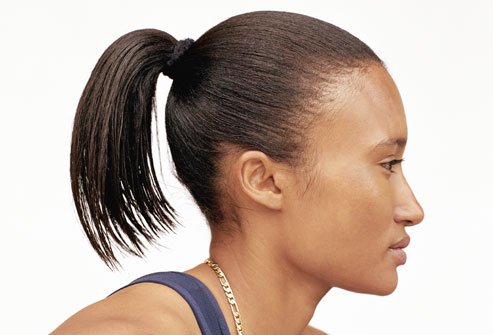
Does your head ache after a day wearing a ponytail? There’s actually a medical term for this: “ponytail headache syndrome.” This disorder doesn’t affect everyone, but those who experience it know this can be a painfully frustrating type of discomfort.
Ponytail headache syndrome seems to be a type of allodynia. Allodynia, which is associated with fibromyalgia, causes normal sensations to be perceived as painful. Some with allodynia might experience pain from even a light touch on the arm.
There are a few ways to deal with ponytail headache syndrome. One is to make sure you get a good night’s sleep—lack of sleep can cause you to perceive pain more intensely. Another is to reduce stress for the same reason. You can also wear your hair more loosely of course. But if you are set on your tight hairstyle, consider taking ibuprofen when you style your hair. Also, at some point during the day, let your hair down. Even one minute of relief can make a difference at the end of the day.
Migraines: Strong Odors

For migraine sufferers, many things can trigger intense pain. Certain smells can set them off, for example. This seems to be the case in 25% to 43% of all those who suffer from migraines.
One study found that the odor most likely to trigger a headache was perfume, followed by paint, gasoline, and bleach. Other offenders include fried foods, cleaning products, exhaust, onions, and cigarette smoke. It only takes a few minutes for a given smell to send headache sufferers reeling. That’s why learning what smells trigger your headaches is important.
Whether or not certain smells trigger them, people with chronic migraines are more likely than others to be offended by smell. Researchers tested 50 people who get migraines and 50 who don’t to determine how sensitive they were to a variety of smells. Out of migraine sufferers, 42 were bothered by odors, while only nine non-sufferers were bothered.
Neck and Back Pain: Sleeping Awkwardly

Depending on how your spine is curved, you could be causing a lot of stiffness and pain in your back and neck while you sleep. Stomach-sleepers are the most likely to throw their spine out of alignment, but it can happen for back-sleepers and side-sleepers too.
To relieve this type of pain, you need to pay close attention to your sleep position. If you sleep on your back, make sure the normal curve of your spine is maintained. If you sleep on your side, be sure the portion of your spine that crosses into your neck remains even with the portion that goes through your ribcage—a big, firm pillow helps. If you’re a stomach-sleeper, switch! Stomach sleeping is tied to the most cases of back and neck pain because sleeping on your stomach forces you to turn your head in an awkward way, which often causes pain.
Headaches: Drinking Alcohol

Does your head hurt after you drink? There are two times when alcohol can cause a headache. The first is right after you drink—about 30 minutes to 3 hours after, to be specific. The second is the morning after when the hangover starts.
It doesn’t seem to matter what type of alcohol you drink. Red wine is frequently accused, but studies show the variety doesn’t much matter. How much you drink could make a difference, though. Instead of the type of alcohol, it seems to be the alcohol itself—ethanol—causing head-pounding pain. About a third of migraine-sufferers seem to be triggered by alcohol. But drinking can bring on tension and cluster headaches, too.
Headaches: Going Hungry

Been awhile since you last ate? Feeling a little nausea, with a thumping headache? That’s common. When you skip a meal, diet too rigorously, or fast, your body’s glucose level drops. Glucose is the sugar that keeps your body functioning, and when your blood-sugar level drops, you tend to feel fatigued, weak, shaky, and sometimes headachy.
Compared to most headache triggers, the solution for hunger headaches is very simple—eat! Specifically, you should try to find a high-protein meal with complex carbohydrates to give your body the fuel it needs to function normally.
Back Pain: Lifting Improperly

Eventually nearly everyone experiences some amount of back pain. One of the common sources of this is lifting without proper technique. Most of this pain can be avoided, fortunately, once you know the movements and positions more likely to leave your back in agony.
When you need to lift something, pay attention to your posture. Your posture should be as neutral as possible. Avoid:
- Bending, twisting, or reaching repetitively
- Pitching forward during your lift
- Working hard while your body is bent or twisted
Always lift with your legs, and not your back. This is because the muscles in your legs are stronger and can manage a greater burden than your back muscles can. Keep your shoulders square. If an object is too heavy and you sense back pain on the horizon, get a friend, family member, or coworker to help divide the load.
Back and Neck Pain: Office Work

Do you feel stiffness and pain in your neck and back after work? Millions of people do. But you don’t have to agonize every day at the office. A big part of the solution is to say no to slouching. Sadly many people don’t know what it takes to maintain a good posture throughout the workday.
To make sure your spine is properly aligned at work, pay attention to your posture. Keep your feet flat on the floor. Sit so that your weight is distributed across your buttocks, not your tailbone. Also, make sure you’re not straining to look up or down at your computer monitor-keep it at eye level. For more tips tailored to your work situation, get in touch with your human resources department. Find out if ergonomic tips have been designed for your work situation, and follow them.
Headaches: Eyestrain
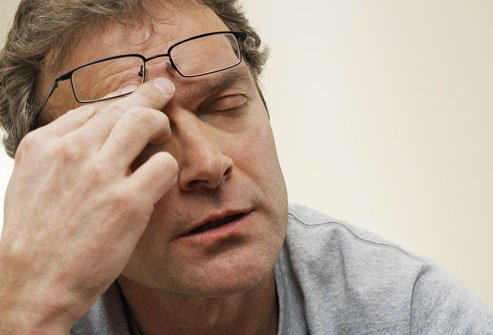
Is your eye in pain? Strangely enough this usually isn’t a problem with your eye. Most eye pain is actually caused by headaches. To make matters more complicated, one of the problems that starts with your eyes can cause headaches: eyestrain.
If you have vision problems, you may find yourself straining to see clearly and with focus. Sometimes this is a matter of being nearsighted, farsighted, or suffering from astigmatism. Sometimes it means your eyes aren’t properly aligned. This kind of strain happens after long stretches spent staring at a single point, like you do when you stare at your phone or computer screen, or a book or magazine. If eye problems are causing your headaches, make sure your glasses are fitted with the proper prescription. If they are and the pain continues, talk to your eye doctor about further remedies.
Joint Pain: Weather Changes

Have you ever heard someone complain that their joints hurt when the weather shifts? It’s not a myth—pain from weather changes really do happen. There are three weather changes that can make your joints ache: pressure changes, temperature drops, and humidity.
When the barometric pressure changes, this can indicate a storm is about to move through. It can also mean your joints are in pain. It’s not so important where the pressure stands at a given moment—the changes in pressure are what seem to cause the pain. This may be because your tendons, bones, and muscles expand and contract as the pressure shifts.
When the thermometer drops, joint pain tends to rise. It’s not well understood why this happens, but it could involve the thickness of your joint fluid. Joints have fluid that keep them lubricated, and cold weather makes this fluid thicker, which could lead to stiffness. This problem is worse when it’s wet outside, as cold weather and high humidity have been shown to cause more pain than either by itself.
Muscle Pain: Working Out Infrequently

When you lift weights, soreness comes on the next day and can last for four or five days. Why is this? Lifting heavy weights actually damages your muscle fiber. That triggers an inflammatory response that makes your pain receptors more sensitive afterwards. This is known as delayed-onset muscle soreness, or DOMS. The pain is worse, though, when you start a particularly intense routine. Anyone who works out intensely enough will experience DOMS. The thing is, after you get used to a routine over time, the soreness decreases. Your pain receptors seem to be less sensitive after weight lifting as your body becomes more accustomed to a workout.
But what if you never get used to a routine? If you work out infrequently, you are dooming yourself to the same soreness again and again. Those pain receptors never have time to grow accustomed to the inflammation that comes with weight training. So if you find yourself intensely sore after each workout, consider hitting the weights more often.
Neck and Shoulder Pain: Carrying Kids

It’s not often talked about, but many new mothers and fathers are in for a lot of physical pain in the first few years. That tiny bundle of joy you carry from place to place gets bigger and bigger. As your baby grows, so does the burden placed on your shoulders and neck.
When you need to lift your child, lift with your legs, not your back. Don’t favor one arm over the other—this can put strain on your dominant shoulder. When you’re carrying your baby, keep your shoulders back and stand nice and tall. This helps distribute the extra weight around your body and can help prevent pain and even injury. Nursing mothers should be especially careful to avoid staring down at their infant while breast or bottle feeding. Of course you can look at your baby, but stretch out your shoulders as you do, and take breaks. This can help you avoid a common neck pain associated with new moms.
Jaw Pain: Grinding Teeth
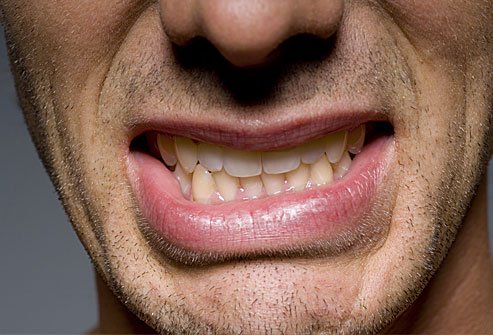
Ever wake up with an ache in your jaw? A lot of people grind their teeth at night, and this can leave your jaw aching painfully the next day. If you are grinding your teeth while you sleep, you may have other symptoms, such as insomnia, headaches, ear aches, anxiety, and depression.
If you have jaw pain, it may be caused by grinding teeth, or it may not. A doctor can assess you for other potential causes, including infections, ear problems, TMJ problems, and dental issues. If you are grinding your teeth, you will be encouraged to take daily steps to relieve the problem. These may include reducing stress, sleeping enough, drinking enough water, and avoiding gum and hard, chewy foods like nuts, steaks, and hard candies.
Headaches: Sexual Activity
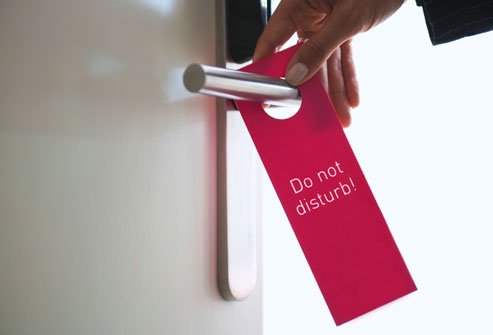
Have you ever had a headache during sex? Sex headaches are real, and they come in two types. The first is a dull, gradual ache that worsens as you approach climax. The second is an intense, pounding headache that occurs at or near orgasm. These headaches are usually not a cause for concern, but they may indicate other health problems. Usually they come in clusters over the course of a few months and then go away for awhile.
Some people actually find that sex relieves their headaches, but whether this is likely depends on the type of headache you tend to experience. About 60% of those who have experienced sexual activity during a migraine attack report relief from their headache. Some with cluster headaches also find that sex relieves their pain, though the percentage is smaller—a little over 35%.
Whole-Body Pain: Stress
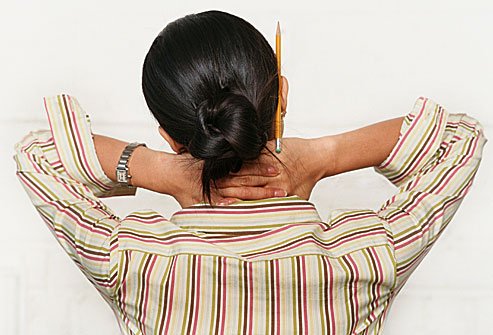
Everyone experiences stress sometimes. Stress is the feeling we get when the body goes into its “fight or flight” response. It may be triggered by an argument with a loved one, getting stuck in traffic, or anything else that your body perceives as a threat.
When your body reacts to a threat, several changes take place. One is that your heart starts beating faster. Another is that your muscles get tense—ready to fight or run. That’s great if the threat is a physical one like a dangerous animal. But in modern life most of our stressors are not like this. In fact some of our stressors last months or even years, which can lead to chronic stress. If you’re chronically stressed out, those tense muscles can leave your body aching all over.
If you recognize yourself in that scenario, you need to find a way to reduce your stress in order to feel good again. Different forms of relief work better for different people. Some find that intense exercise helps them relax. For others yoga or tai chi may work better. Meditation, deep breathing, massage, and other therapies work better for others. Finding the right way to destress can help ease the overall body pains you may be experiencing.
When Should You See a Doctor?

Some forms of pain are more serious than others. You need to see a doctor emergently if you experience any of the following:
- A stiff neck or severe headache
- Chest pain
- Pain that includes numbness or weakness
- Pain caused by a serious injury
Chronic pain can also be cause to see a doctor, particularly if it deprives you of your sleep, your work, or activities with family or friends.
If your pain doesn’t fall into these categories, you may decide to treat it yourself. If that’s the case, consider your over-the-counter pain relieving options. Drugs like ibuprofen, aspirin, and naproxen are useful for various minor pains. Be careful – do not exceed the recommended doses as too much pain medicine can be toxic or even lethal.
Pain Management: Surprising Causes of Pain
IMAGES PROVIDED BY:
- iStock
- Ron Levine / Photographer's Choice
- Corbis
- iStockPhoto
- Echo / Cultura
- Rita Maas / The Image Bank
- Robert Glenn / DK Stock
- Jose Luiz Pelaez Inc / Blend Images
- Steve Pomberg / WebMD
- Tara Moore/Stone+
- Cecile Lavabre / Photographer's Choice
- B2M / Photodisc
- Andrew Unangst / Photographer's Choice
- Bernard Proust / Stock Food Creative
- UpperCut Images
- Klaus Tiedge / Fancy
- B2M / Photodisc
- Radius Images
- Ultra. F / Photodisc
- Sian Kennedy / Stone
- Marcy Maloy / Photodisc
- Bilderlounge
- Altrendo Images
- Jim Arbogast / Digital Vision
REFERENCES:
- ABC News: “When should I see a doctor about my pain and when should I treat pain myself?”
- The American Institute of Stress: “Stress effects.”
- American Journal of Roentgenology: “Baby wrist’: MRI of an overuse syndrome in mothers.”
- American Migraine Foundation: “Do I need to have my eyes checked if my head hurts?” “Understanding migraine: Alcohol and migraine.”
- American Podiatric Medical Association: “Flip-flops.”
- Arthritis Foundation: “Weather and arthritis pain.”
- BBC News: “Watching TV ‘harms back muscles.”
- BMJ: “Nintendo related injuries and other problems: A review.”
- Cephalagia: An International Journal of Headache: “The impact of sexual activity on idiopathic headaches: An observational study,” “Odorant substances that trigger headaches in migraine patients,” “Rating of olfactory judgements in migraine patients.”
- Cleveland Clinic: “Do you have a stiff neck? Try these simple remedies,” “Headaches and food,” “Text neck: Is smartphone use causing your neck pain?”
- Current Opinions in Neurology: “Multisensory integration in migraine.”
- Family Health Online: “Bouncing back after baby.”
- Fox News: “This simple tweak to how you sit while driving can take away back and shoulder pain.”
- Headache: “Olfactory symptoms reported by migraineurs with and without auras.”
- The Journal of the American Osteopathic Association: “Diagnosis and management of piriformis syndrome: An osteopathic approach.”
- Journal of Back and Musculoskeletal Rehabilitation: “Musculokseletal pain among undergraduate laptop users in a Nigerian University.”
- The Journal of Family Practice: “Did too much Wii cause your patient’s injuries?”
- Journal of Neurosciences in Rural Practice: “Alcohol-induced headaches: Evidence for a central mechanism?”
- Journal of Physical Therapy Science: “Effect of sleep posture on neck muscle activity.”
- The Journal of Physiology: “Muscle tenderness from exercise: Mechanisms?”
- Kansas State University: “Back injury prevention.”
- LiveScience: “Can people get hurt playing Wii games?”
- Michigan State University: “Preventable pain nags most office workers.”
- The Migraine Trust: “Hypoglycaemia.”
- National Headache Foundation: “Chronic migraine and abnormal sense of smell linked,” “Low-tyramine diet for migraine,” “The complete headache chart.”
- National Health Services: “10 headache triggers.”
- New York Times: “Fitness; When mothering is a pain in the wrist.”
- NIH: “Bruxism.”
- Oahu Spine Rehab: “Driving: A literal pain in the neck.”
- Rush University: “When technology hurts: Thumb and elbow pain.”
- Southern Medical Journal: “Back pain in children and adolescents: a retrospective review of 648 patients.”
- University of Michigan Health: “Why your tight ponytail causes a painful headache.”
© 1996-2022 WebMD, LLC. All rights reserved.
Source slideshow on OnHealth


